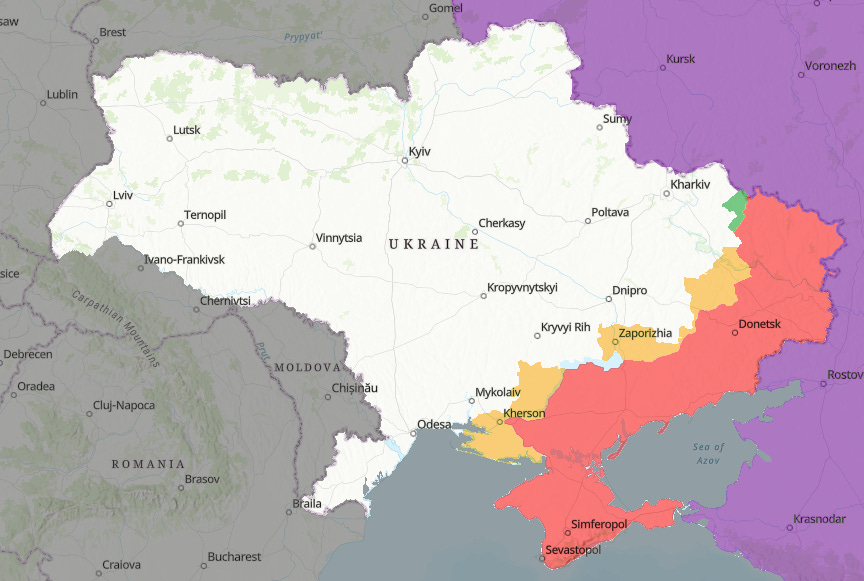Freezing Ukraine's conflict is a terrible idea
Trump's plan guarantees war in Ukraine for the foreseeable future.
Diplomatic negotiations with Russia over the fate of Ukraine have reached an impasse, according to reporting in Bloomberg. Most of the article focuses on Putin’s insistance that it control the four regions that it held sham referendums in nearly three years ago, an endgame that I said was likely when the war began. In passing, however, we also get a look at Trump’s current plan:
Trump’s envoy Steve Witkoff sought to persuade Putin that Russia should agree to a ceasefire that halts fighting along the current frontlines during lengthy talks at the Kremlin on Friday, according to two of the people, who asked not be identified discussing sensitive issues.
Trump has not, as far as we know, proposed any particular requirements for further negotiations after the ceasefire has been reached. Nor does he appear to be holding on to any negotiating chips to that end. By all appearances it looks like a permanently frozen conflict is the Trump administration’s exclusive goal, an outcome that would be politically convenient for him but that would prove disastrous for Ukraine and Russia alike.
While the fighting in Ukraine must be brought to an end as quickly as possible, leaving negotiations at a so-called “permanent ceasefire” is not going to do the job. That is the obvious lesson of Minsk. Putin has already proven that he is not satisfied with leaving Donetsk and Luhansk as perpetual protectorates outside the borders of his country, and without a formal settlement the domestic politics of Ukraine will eventually once again favor attempts to take it back. Leaving control of the southeast undecided would likely prove even more destabilizing; Putin’s claim of legitimacy-by-referendum is far less plausible in Zaporizhzhia and Kherson, and its strategic value to Putin as a military and commercial route to Crimea would be severely undermined as long as the region is at all contested.

Putin’s plan would break off three small chunks of territory that he currently does not control along the contact line, including the two cities for which the Kherson and Zaporizhzhia oblasts are named. If that were all he could hope to get out of the deal the game would hardly seem worth the candle, particularly since Trump and Ukraine seem determined to negotiate back control of the Zaporizhzhia nuclear plant. What Putin is likely much more interested in is formally annexing whatever territory he can into the Russian Federation. In that light, it seems likely that Ukraine could push for a compromise position: Russia gains formal control, but only of the territory it currently occupies. Aside from ending the war, this compromise would also be advantageous to Zelensky insofar as it lets him avoid accusations that he “gave away” territory Russia did not yet control. This, I noted in December, is a deal that polling indicates a majority of Ukrainians would support.
Regardless of what compromise is reached, both Ukraine and Russia should resist Trump’s attempt to leave the conflict unsettled with another superficial ceasefire. Trump has already proven in Israel his eagerness to claim credit for “ceasefires” that resolve nothing and do not even end the fighting; no one should doubt that he will do the same in Ukraine given the opportunity.
Thanks for reading! My blog is supported entirely by readers like you. To receive new posts and support my work, why not subscribe?
Refer enough friends to this site and you can read paywalled content for free!
And if you liked this post, why not share it?




